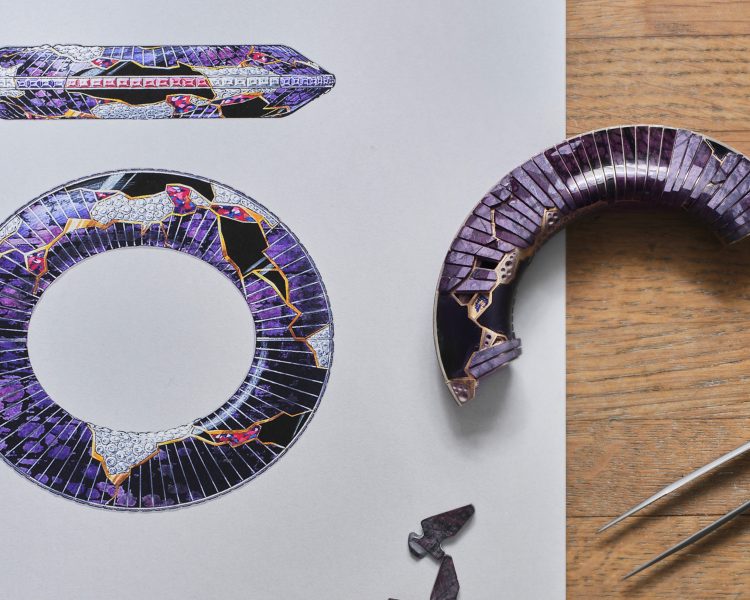In watchmaking as in jewelry, Cartier has always enjoyed playing around with shapes. It all began with the magical floating hands of a mysterious clock that came out of the House’s workshops, which in turn inspired the creation of dials for round, square, barrel, oval and round-in-a-square watches, as well as the surprising Coussin watch set with almost 1,000 precious stones – a watchmaking first – which can be lowered or inflated with a simple touch of the finger. When it comes to jewelry, the Parisian House constantly draws on its stylistic territory, nurtured over the decades by the arts from around the world.
Each year, a collection is designed in total freedom by Cartier’s design studios. This year, with Cartier Libre, collection Polymorph, tiny gems full of imagination, unique pieces and limited series of watches, jewelry and accessories have been transformed, revealing an unexpected facet. These pure-form creations play with new perspectives, lines, volumes, contrasts and appearances.
A new way of looking at the time?
Several watchmaking jewelry pieces reveal tiny dials nestled at the heart of astonishing creations.
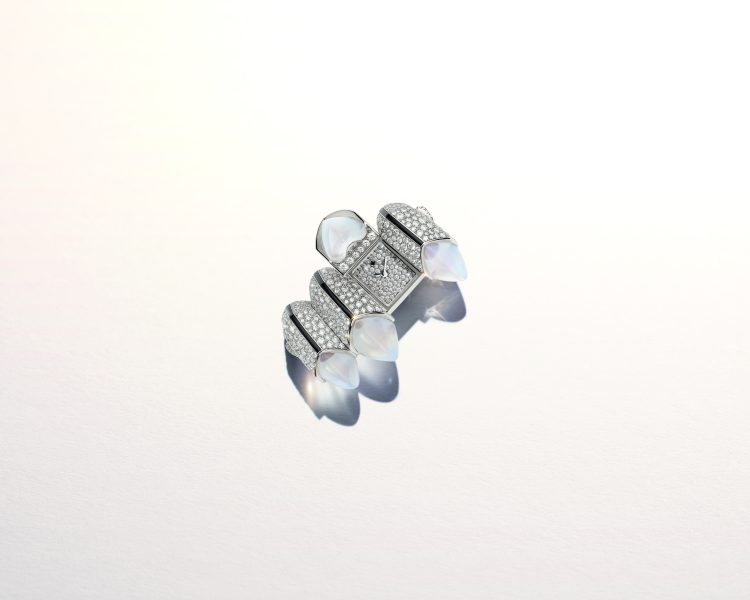
The panther’s signature is omnipresent and original. Here, a clip with snow-set moonstone and diamond claws, set off with cut onyx, reveals a tiny dial measuring just 1 cm2 by simply pressing a claw.
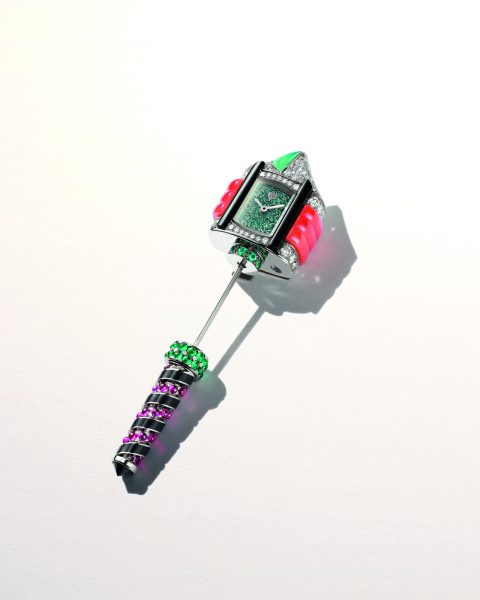
As intriguing as they are extravagant, these small helical pin watches can be worn on the lapel of a jacket or sleeve. Their audacious style unravels the brand’s signature style, from the combination of colors, the intricate cutting of onyx, rubies and chrysoprase, and the precision of the lacquer work, to the contrast of the diamond pavé and the profusion of brightly colored stones.
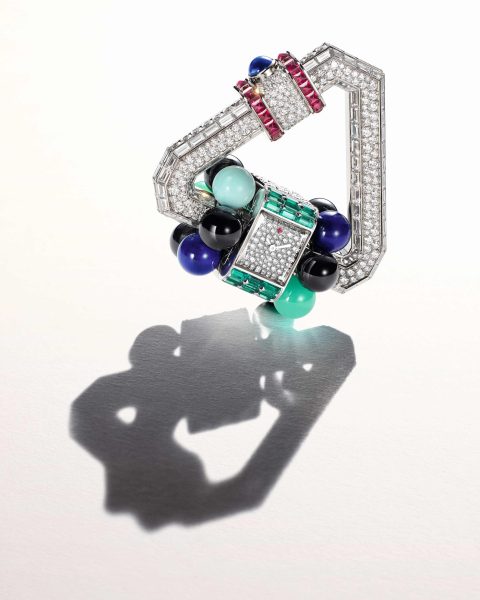
Another watchmaking extravaganza is a snap hook with a pivoting dial, surrounded by balls of lapis lazuli, onyx, black spinels, turquoise and chrysoprase that roll over themselves in the chromatic combinations that Cartier is so fond of. The clasp opens by pressing a sapphire cabochon. This totally extravagant piece of jewelry is both functional – it can be clipped to a belt or bag – and exuberant in its craftsmanship, cuts and settings, from rail-set baguette diamonds and snow- or brilliant-set diamonds to square-set rubies, stud-set sapphires and emeralds.
The collection also includes a tribute to the early 20th century, a shoulder jewel, a long jewelry cord that is worn over the shoulder. The fine liana of multi-colored stones ends, on the front, with a charm watch hidden by a guilloché and blue-enameled gold plate pivoting on the dial. Elegance in the absolute.
Magician jewelry
On a ring, a dome set with diamonds mounted on invisible rods transforms its volume according to how much pressure is placed on it. With the slightest movement, the light plays on this impressive dome which, in a highly original detail, slips between two fingers. It is a piece that celebrates Jeanne Toussaint’s love of volume jewelry.
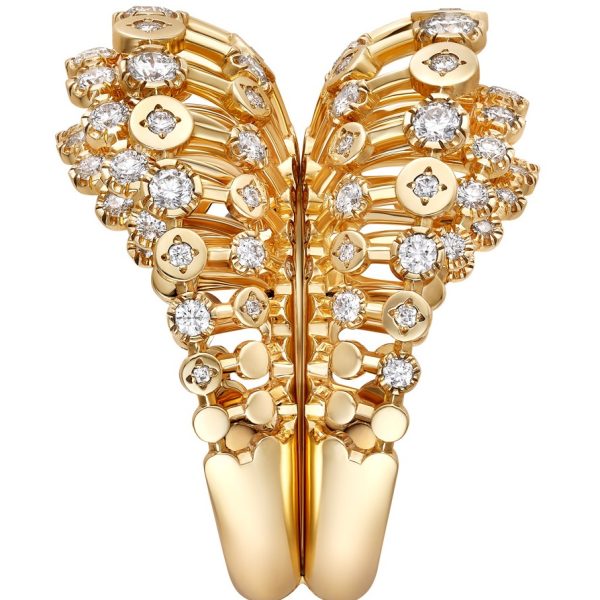
While some jewels metamorphose under the pressure of a finger, others turn on their axis to change their appearance in radically different ways. Two pieces of jewelry are born from a single piece, like the two halves of the bracelet or ring that make up this set. By turning over, they transform a jewel with a smooth, domed surface into a piece that appears to be made up of two parts. An architecture of light then appears, like a shower of diamonds gushing from a mesh of gold.
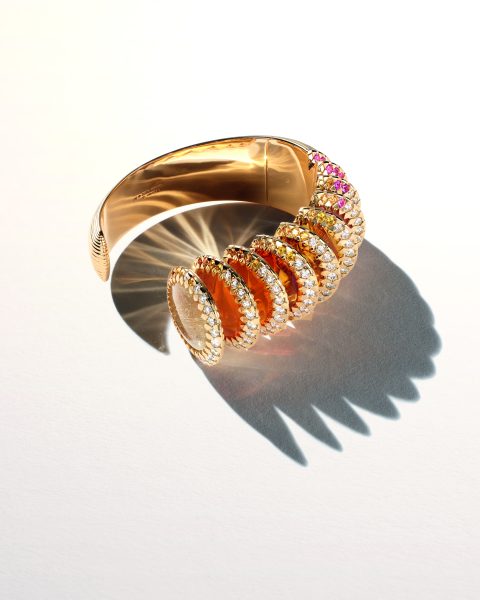
On another bracelet, the hours pass in a luminous summer sky. Each disc in the jewel evokes a phase of the sun’s path, passing through every shade of light, from pale yellow to blazing orange. It’s a pure marvel, in keeping with Jeanne Toussaint’s taste for gemstones that were rarely used in jewelry at the time, and which light up this admirable composition. In the same vein, an eclipse of the moon unfolds its different phases in diamond and onyx discs on a ring with nocturnal accents. The discs are mobile, and the moon grows and shrinks infinitely, further underlining Cartier’s taste and talent for metamorphosis.
In its exploration of changing materials, Cartier also drew inspiration from the Japanese art of kintsugi, a technique for repairing broken porcelain or ceramics using lacquer sprinkled with gold powder. Here, Cartier uses gold wire to represent the imaginary signs of repair of two bangles. The stone inserts create a precious marquetry of contrasts, illuminated by rubies, diamonds and broken lines of gold thread, with calibrated stones set on the edge. The precision and complexity of the lapidary work reveals all its excellence here.
